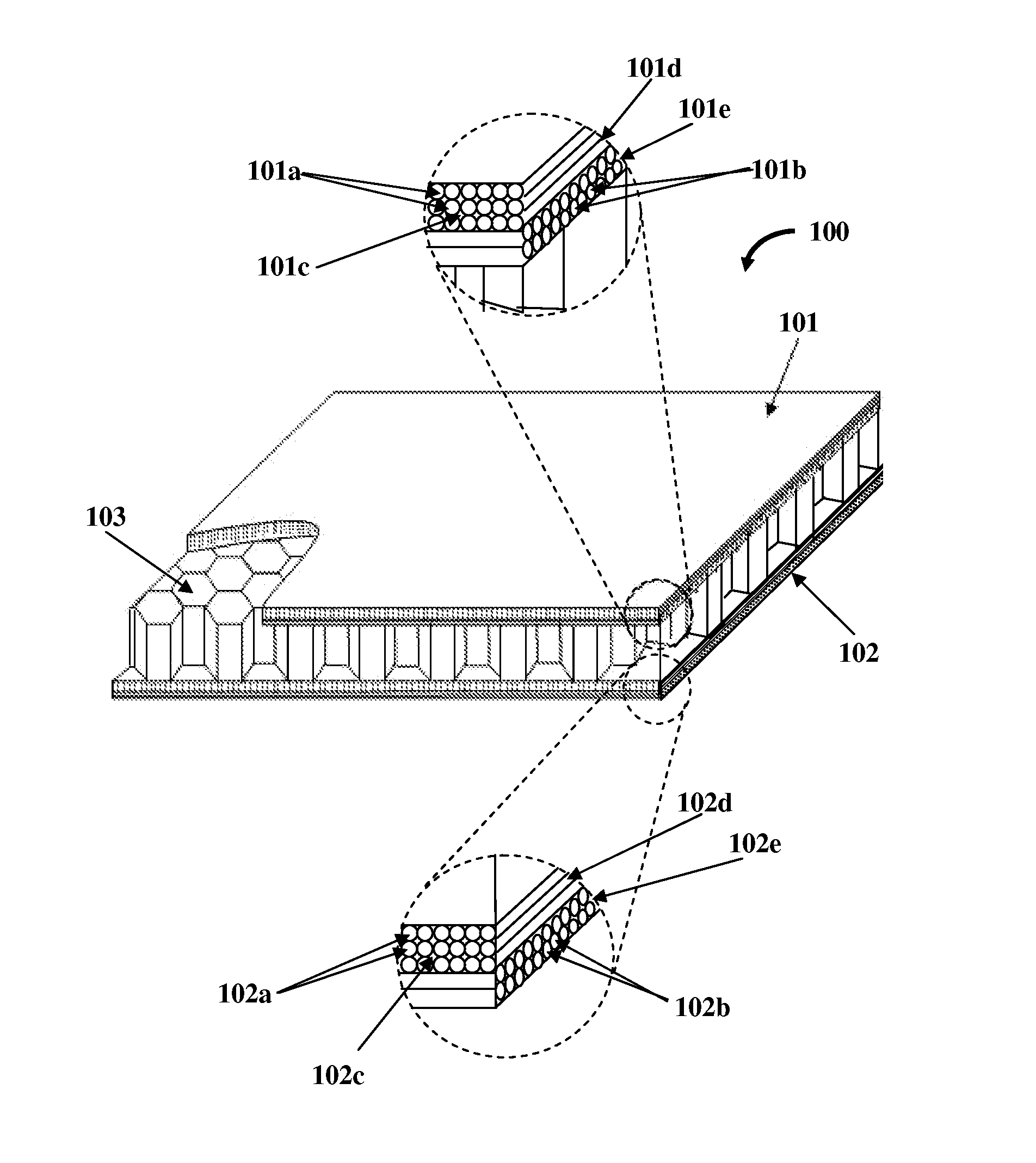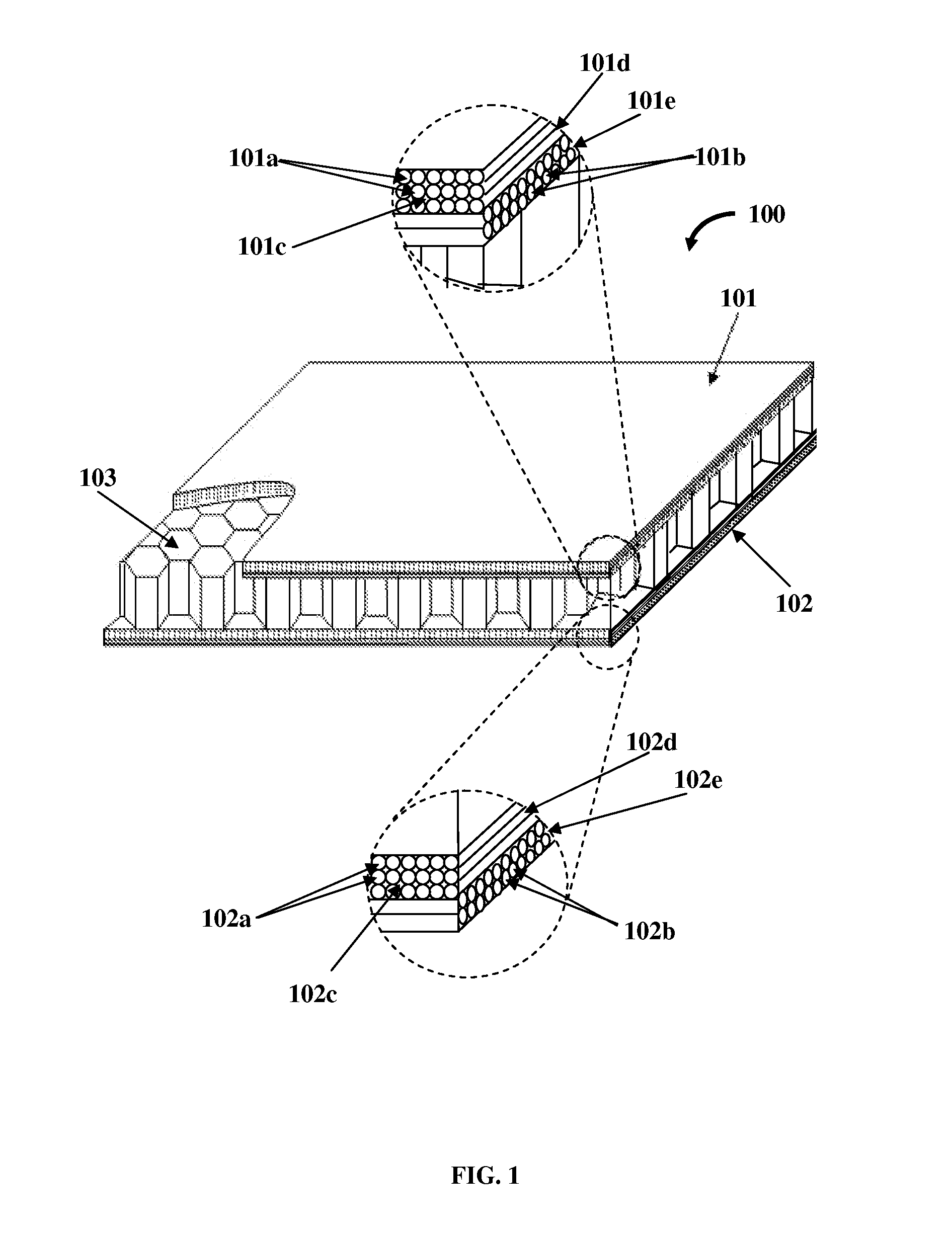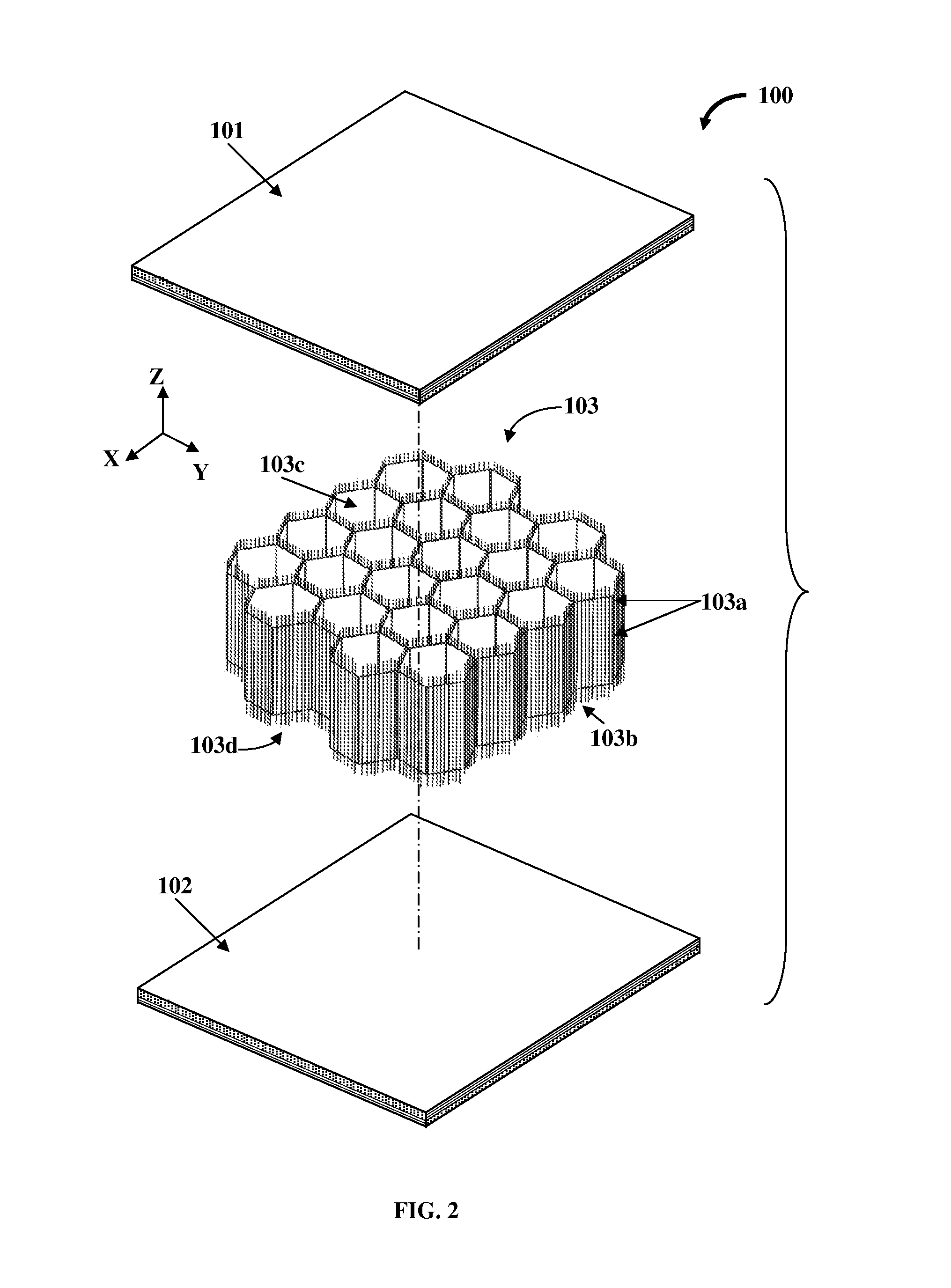Radiolucent Patient Table
a patient table and radiolucent technology, applied in the field of composite structures, can solve the problems of structural weakening, low relative strength of composite skins made from foam cores, and less fatigue resistance of foam core sandwich structures
- Summary
- Abstract
- Description
- Claims
- Application Information
AI Technical Summary
Benefits of technology
Problems solved by technology
Method used
Image
Examples
Embodiment Construction
[0019]FIG. 1 illustrates a perspective view of a radiolucent patient table top 100. The radiolucent patient table top 100 disclosed herein comprises a first face sheet 101, a second face sheet 102, and a carbon fiber honeycomb core 103. The first face sheet 101 comprises carbon fibers 101a and 101b in a first radiolucent plastic matrix 101c. The second face sheet 102 comprises carbon fibers 102a and 102b in a second radiolucent plastic matrix 102c. In an embodiment, the first plastic matrix 101c of the first face sheet 101 and the second plastic matrix 102c of the second face sheet 102 comprise, for example, a radiolucent epoxy resin. The carbon fiber honeycomb core 103 is disposed between the first face sheet 101 and the second face sheet 102. The first face sheet 101 and the second face sheet 102 sandwich the carbon fiber honeycomb core 103. The honeycomb core 103 comprises carbon fibers 103a embedded in a third radiolucent plastic matrix 103b as exemplarily illustrated in FIGS. 2...
PUM
 Login to View More
Login to View More Abstract
Description
Claims
Application Information
 Login to View More
Login to View More - R&D
- Intellectual Property
- Life Sciences
- Materials
- Tech Scout
- Unparalleled Data Quality
- Higher Quality Content
- 60% Fewer Hallucinations
Browse by: Latest US Patents, China's latest patents, Technical Efficacy Thesaurus, Application Domain, Technology Topic, Popular Technical Reports.
© 2025 PatSnap. All rights reserved.Legal|Privacy policy|Modern Slavery Act Transparency Statement|Sitemap|About US| Contact US: help@patsnap.com



